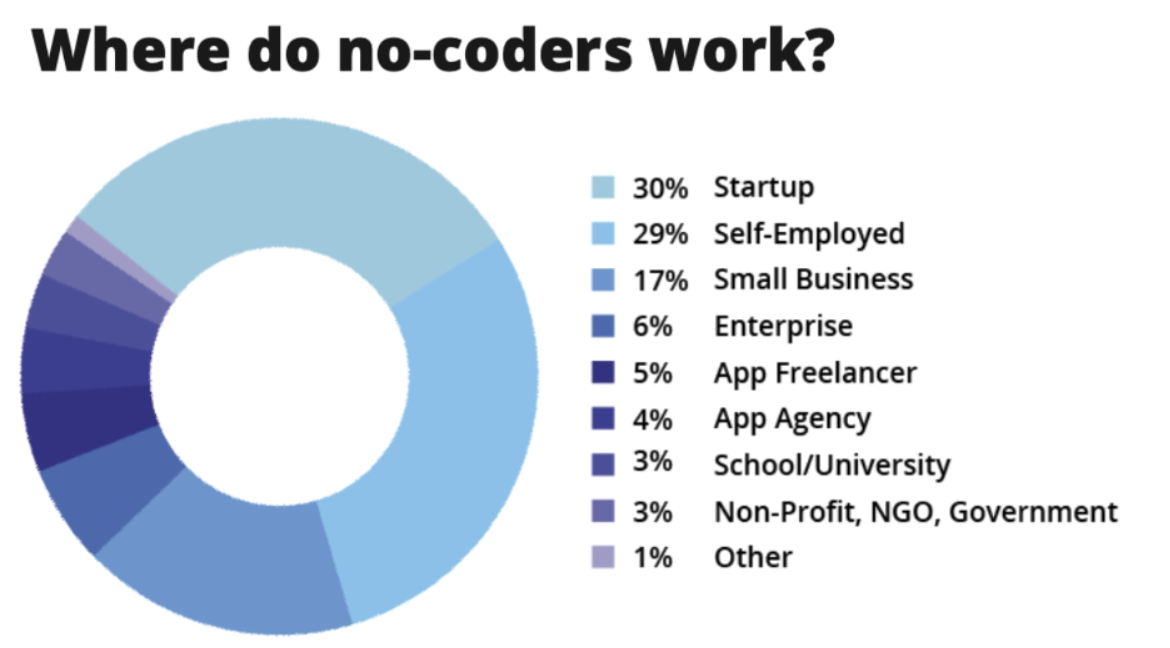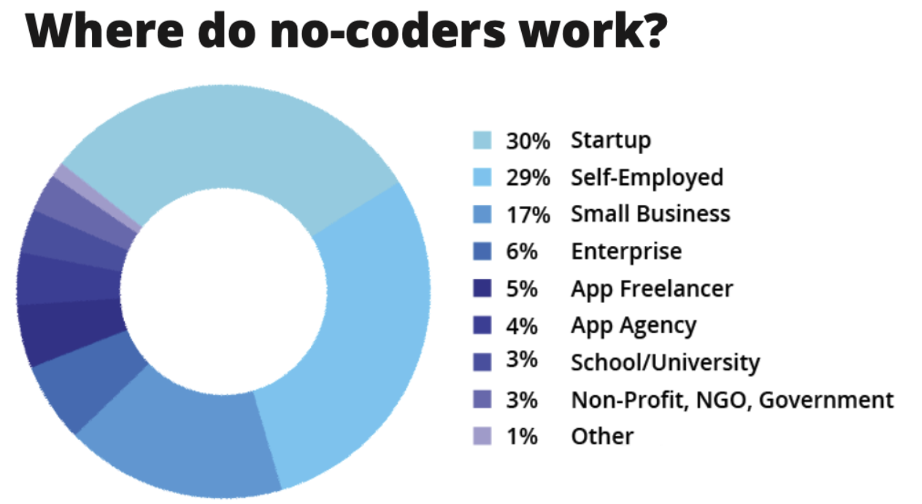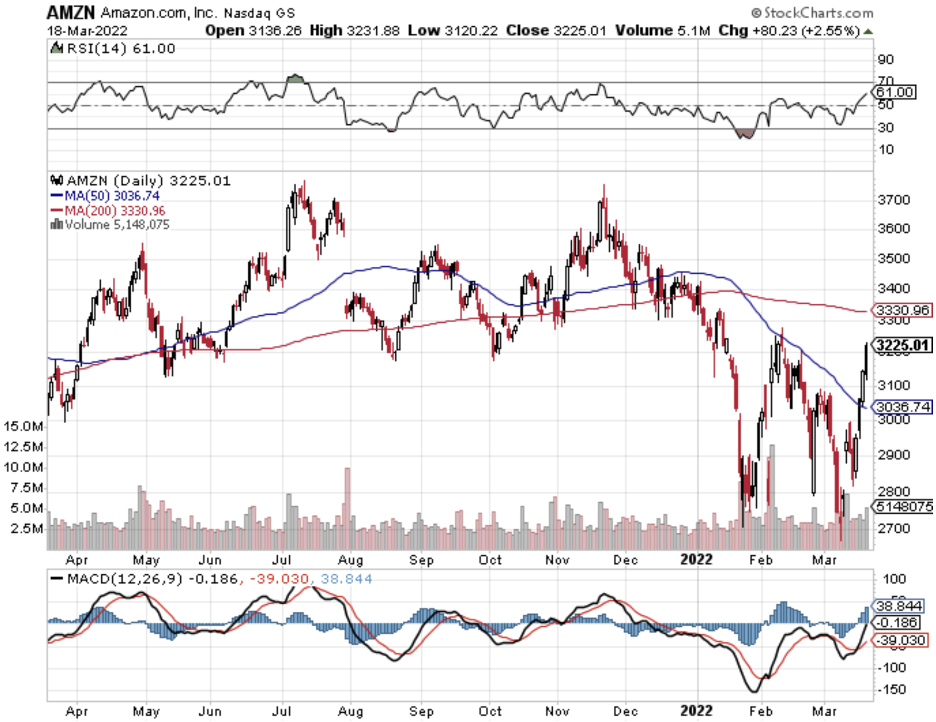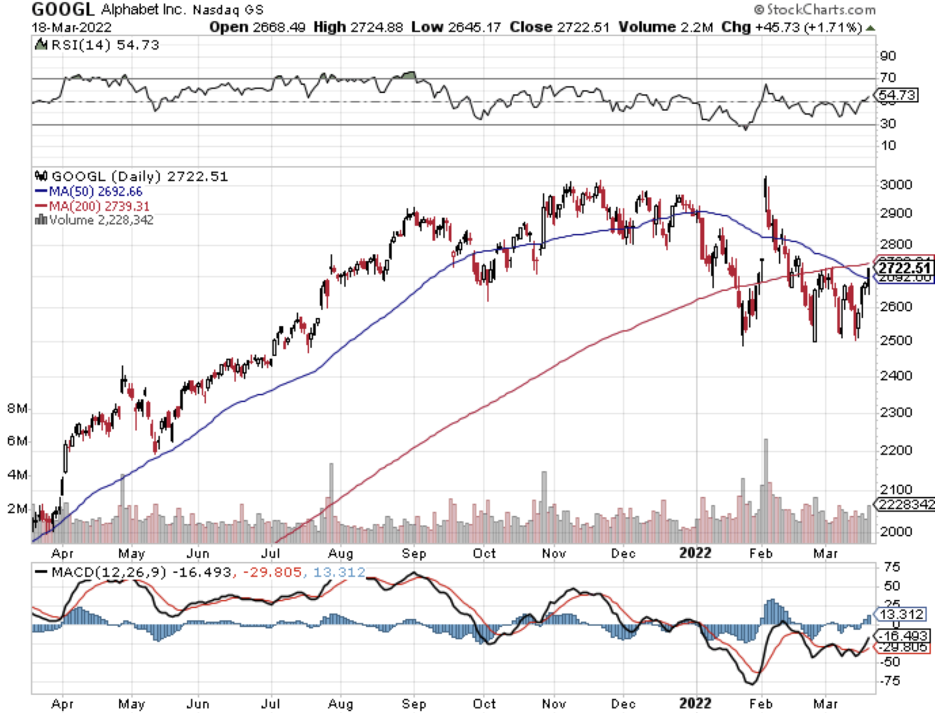Mad Hedge Technology Letter
December 23, 2024
Fiat Lux
Featured Trade:
(THE FUTURE IS HERE)
(NO CODE)

Mad Hedge Technology Letter
December 23, 2024
Fiat Lux
Featured Trade:
(THE FUTURE IS HERE)
(NO CODE)

Mad Hedge Technology Letter
November 20, 2024
Fiat Lux
Featured Trade:
(THE FUTURE IS HERE)
(NO CODE)

Mad Hedge Technology Letter
July 24, 2024
Fiat Lux
Featured Trade:
(THE FUTURE IS HERE)
(NO CODE)

The future is here.
No code or low code will bring a raft of new innovative tech companies to market, and we are in the early innings of this transformative development.
What is no code?
No-code is an approach to designing and using applications that requires zero coding or knowledge of programming languages.
This type of software hits us at a perfect time when the home office is beginning to become ubiquitous.
The self-service movement that empowers business users will support the creation, manipulation, and employment of data-driven applications.
If we turn back the pages of history, companies need an army of software programmers to develop even the measliest application.
That was then and this is now.
Fast forward to today and automated technology doesn’t only include cutting-edge industries like automotive cars, but also software on laptops that can be rejigged by individual entrepreneurs.
That’s right, one person with no coding experience will be able to design, develop, and offer a real-life application with meaningful business value without the help of expert programmers.
The research data backs up my thesis with research firms projecting a 23% increase in the global market for this type of technology.
During the pandemic, low-code/no-code tools saw steady growth due to their effectiveness in addressing some of tech’s most complicated challenges.
The essential need to digitize workflows and enhance customer and employee experiences will be a boost to the efficiency of commercial and operational teams.
No-code platforms have evolved from just facilitating mundane tasks to making it possible for a broader range of business employees to truly own their automation and build new software applications with no coding while increasing organizational capacity.
A few risks that larger companies might consider is that even for remote developers building new applications, governance is paramount.
IT staff will need to install guardrails and have those built into low-code/no-code platforms to maintain consistent levels of security across the organization.
Cybersecurity solutions need to be integrated into this workflow by training every employee at the organization on security behavior and using compartmentalization and limited access to prevent opportunities for mistakes.
Hard landings are hard to recover from and some can be crippling to the business model.
For no-code companies, harmonizing workflows is a key requirement for success.
In a low-code/no-code organization, departments should be able to work without silos and communicate freely across functions.
Elevated performance enabled by low-code/no-code tools will mean that the number of useful apps hurling toward the marketplace will be more and merrier than ever before.
Higher performance will no doubt usher in a new renaissance of efficiency and even better performance.
This also puts a 3 or even 4-day workweek squarely in play.
Many of the best tech minds in the world have supported the concept of working smarter instead of working harder.
A low code/no-code standard will allow for these achievements to take place.
The cratering of costs to start and run a tech firm is affected too.
Deploying startup capital to pay for other expenses will make it easier for successful incubation.
This will ultimately mean that this new type of tech company will need to embrace the fusion of IT and business staff, empowering them with composable applications to speed up the time to market for new solutions.
Low-code/no-code, APIs, and other tools are enabling companies to integrate new applications into their existing tech stack in a more seamless manner with a lift-and-shift approach vs. a rip-and-replace.
At the entrepreneur level, individuals will be able to harness the technology to build $100 million companies with a snap of the fingers when it wasn’t possible to do it before.
This is finally a chance for the little guy to recapture their moxie in the vast and sometimes overwhelming business world.

Mad Hedge Technology Letter
December 23, 2022
Fiat Lux
Featured Trade:
(THE FUTURE IS HERE)
(NO CODE)

The future is here.
No code or low code will bring a raft of new innovative tech companies to market, and we are in the early innings of this transformative development.
What is no code?
No-code is an approach to designing and using applications that requires zero coding or knowledge of programming languages.
This type of software hits us at a perfect time when the home office is beginning to become ubiquitous.
The self-service movement that empowers business users will support the creation, manipulation, and employment of data-driven applications.
If we turn back the pages of history, companies needed an army of software programmers to develop even the measliest application.
That was then and this is now.
Fast forward to today and automated technology doesn’t only include cutting-edge industries like automotive cars, but also software on laptops that can be rejigged by individual entrepreneurs.
That’s right, one person with no coding experience will be able to design, develop, and offer a real-life application with meaningful business value without the help of expert programmers.
The research data backs up my thesis with research firms projecting a 23% increase in the global market for this type of technology.
During the pandemic, low-code/no-code tools saw steady growth due to their effectiveness in addressing some of tech’s most complicated challenges.
The essential need to digitize workflows and enhance customer and employee experiences will be a boost to the efficiency of commercial and operational teams.
No-code platforms have evolved from just facilitating mundane tasks to making it possible for a broader range of business employees to truly own their automation and build new software applications with no coding while increasing organizational capacity.
A few risks that larger companies might consider is that even for remote developers building new applications, governance is paramount.
IT staff will need to install guardrails in place and have those built into low-code/no-code platforms to maintain consistent levels of security across the organization.
Cybersecurity solutions need to be integrated into this workflow by training every employee at the organization on security behavior and using compartmentalization and limited access to prevent opportunities for mistakes.
Hard landings are hard to recover from and some can be crippling to the business model.
For no-code companies, harmonizing workflows is a key requirement for success.
In a low-code/no-code organization, departments should be able to work without silos and communicate freely across functions.
Elevated performance enabled by low-code/no-code tools will mean that the number of useful apps hurling towards the marketplace will be more and merrier than ever before.
Higher performance will no doubt usher in a new renaissance of efficiency and even better performance.
This also puts a 3 or even 4-day workweek squarely in play.
Many of the best tech minds in the world have supported the concept of working smarter instead of working harder.
A low code/no-code standard will allow for these achievements to take place.
The cratering of costs to start and run a tech firm is affected too.
Deploying startup capital to pay for other expenses will make it easier for successful incubation.
This will ultimately mean that this new type of tech company will need to embrace the fusion of IT and business staff, empowering them with composable applications to speed up the time to market for new solutions.
Low-code/no-code, APIs, and other tools are enabling companies to integrate new applications into their existing tech stack in a more seamless manner with a lift-and-shift approach vs a rip-and-replace.
At the entrepreneur level, individuals will be able to harness the technology to build $100 million companies with a snap of the fingers when it wasn’t possible to do it before.
This is finally a chance for the little guy to recapture their moxie in the vast and sometimes overwhelming business world.

Mad Hedge Technology Letter
July 25, 2022
Fiat Lux
Featured Trade:
(THE FUTURE IS HERE)
(NO CODE)

Dealing with the Cloud works, and for every relevant tech company, this division serves as the pipeline to the CEO position.
If this isn’t the case for a tech company, then there’s something egregiously wrong with them!
Take Andy Jassy, the mastermind behind Amazon’s (AMZN) lucrative cloud computing division and the man who succeeded company founder, Jeff Bezos.
He’s been rewarded this important position based on his performance in the cloud, and he faces a daunting proposition of following Bezos as CEO.
Bezos incorporated Amazon almost 30 years ago.
Jassy developed a highly profitable and market-leading business, Amazon Web Services, that runs data centers serving a wide range of corporate computing needs.
Cloud 101
If you've been living under a rock the past few years, the cloud phenomenon hasn't passed you by--you still have time to cash in.
You want to hitch your wagon to cloud-based investments in any way, shape, or form.
Amazon leads the cloud industry it created.
It still maintains more than 30% of the cloud market. Microsoft would need to gain a lot of ground to even come close to this jewel of a business.
Amazon relies on AWS to underpin the rest of its businesses and that is why AWS contributes most of Amazon's total operating income.
Total revenue for just the AWS division would operate as a healthy stand-alone tech company if need be.
The future is about the cloud.
These days, the average investor probably hears about the cloud a dozen times a day.
If you work in Silicon Valley, you can quadruple that figure.
So, before we get deep into the weeds with this letter on cloud services, cloud fundamentals, cloud plays, and cloud Trade Alerts, let's get into the basics of what the cloud actually is.
Think of this as a cloud primer.
It's important to understand the cloud, both its strengths and limitations.
Giant companies that have it figured out, such as Salesforce (CRM) and Zscaler (ZS), are some of the fastest-growing companies in the world.
Understand the cloud and you will readily identify its bottlenecks and bulges that can lead to extreme investment opportunities. And that is where I come in.
Cloud storage refers to the online space where you can store data. It resides across multiple remote servers housed inside massive data centers all over the country, some as large as football fields, often in rural areas where land, labor, and electricity are cheap.
They are built using virtualization technology, which means that storage space spans across many different servers and multiple locations. If this sounds crazy, remember that the original Department of Defense packet-switching design was intended to make the system atomic bomb-proof.
As a user, you can access any single server at any one time anywhere in the world. These servers are owned, maintained, and operated by giant third-party companies such as Amazon, Microsoft, and Alphabet (GOOGL), which may or may not charge a fee for using them.
The most important features of cloud storage are:
1) It is a service provided by an external provider.
2) All data is stored outside your computer residing inside an in-house network.
3) A simple Internet connection will allow you to access your data at any time from anywhere.
4) Because of all these features, sharing data with others is vastly easier, and you can even work with multiple people online at the same time, making it the perfect, collaborative vehicle for our globalized world.
Once you start using the cloud to store a company's data, the benefits are many.
No Maintenance
Many companies, regardless of their size, prefer to store data inside in-house servers and data centers.
However, these require constant 24-hour-a-day maintenance, so the company has to employ a large in-house IT staff to manage them - a costly proposition.
Thanks to cloud storage, businesses can save costs on maintenance since their servers are now the headache of third-party providers.
Instead, they can focus resources on the core aspects of their business where they can add the most value, without worrying about managing IT staff of prima donnas.
Greater Flexibility
Today's employees want to have a better work/life balance and this goal can be best achieved by letting them working remotely, which effectively happened because of the public health situation. Increasingly, workers are bending their jobs to fit their lifestyles, and that is certainly the case here at Mad Hedge Fund Trader.
How else can I send off a Trade Alert while hanging from the face of a Swiss Alp?
Cloud storage services, such as Google Drive, offer exactly this kind of flexibility for employees.
With data stored online, it's easy for employees to log into a cloud portal, work on the data they need to, and then log off when they're done. This way a single project can be worked on by a global team, the work handed off from time zone to time zone until it's done.
It also makes them work more efficiently, saving money for penny-pinching entrepreneurs.
Better Collaboration and Communication
In today's business environment, it's common practice for employees to collaborate and communicate with co-workers located around the world.
For example, they may have to work on the same client proposal together or provide feedback on training documents. Cloud-based tools from DocuSign, Dropbox, and Google Drive make collaboration and document management a piece of cake.
These products, which all offer free entry-level versions, allow users to access the latest versions of any document so they can stay on top of real-time changes which can help businesses to better manage workflow, regardless of geographical location.
Data Protection
Another important reason to move to the cloud is for better protection of your data, especially in the event of a natural disaster. Hurricane Sandy wreaked havoc on local data centers in New York City, forcing many websites to shut down their operations for days.
And we haven’t talked about the recent ransomware attacks by Eastern Europeans on energy company Colonial Pipeline and meat producer JBS Foods.
The cloud simply routes traffic around problem areas as if, yes, they have just been destroyed by a nuclear attack.
It's best to move data to the cloud, to avoid such disruptions because there your data will be stored in multiple locations.
This redundancy makes it so that even if one area is affected, your operations don't have to capitulate, and data remains accessible no matter what happens. It's a system called deduplication.
Lower Overhead
The cloud can save businesses a lot of money.
By outsourcing data storage to cloud providers, businesses save on capital and maintenance costs, money that in turn can be used to expand the business. Setting up an in-house data center requires tens of thousands of dollars in investment, and that's not to mention the maintenance costs it carries.
Plus, considering the security, reduced lag, up-time and controlled environments that providers such as Amazon's AWS have, creating an in-house data center seems about as contemporary as a buggy whip, a corset, or a Model T.
The cloud is where you want to be.


Mad Hedge Technology Letter
March 18, 2022
Fiat Lux
Featured Trade:
(THE FUTURE IS HERE)
(NO CODE)

Legal Disclaimer
There is a very high degree of risk involved in trading. Past results are not indicative of future returns. MadHedgeFundTrader.com and all individuals affiliated with this site assume no responsibilities for your trading and investment results. The indicators, strategies, columns, articles and all other features are for educational purposes only and should not be construed as investment advice. Information for futures trading observations are obtained from sources believed to be reliable, but we do not warrant its completeness or accuracy, or warrant any results from the use of the information. Your use of the trading observations is entirely at your own risk and it is your sole responsibility to evaluate the accuracy, completeness and usefulness of the information. You must assess the risk of any trade with your broker and make your own independent decisions regarding any securities mentioned herein. Affiliates of MadHedgeFundTrader.com may have a position or effect transactions in the securities described herein (or options thereon) and/or otherwise employ trading strategies that may be consistent or inconsistent with the provided strategies.
This site uses cookies. By continuing to browse the site, you are agreeing to our use of cookies.
OKLearn moreWe may request cookies to be set on your device. We use cookies to let us know when you visit our websites, how you interact with us, to enrich your user experience, and to customize your relationship with our website.
Click on the different category headings to find out more. You can also change some of your preferences. Note that blocking some types of cookies may impact your experience on our websites and the services we are able to offer.
These cookies are strictly necessary to provide you with services available through our website and to use some of its features.
Because these cookies are strictly necessary to deliver the website, refuseing them will have impact how our site functions. You always can block or delete cookies by changing your browser settings and force blocking all cookies on this website. But this will always prompt you to accept/refuse cookies when revisiting our site.
We fully respect if you want to refuse cookies but to avoid asking you again and again kindly allow us to store a cookie for that. You are free to opt out any time or opt in for other cookies to get a better experience. If you refuse cookies we will remove all set cookies in our domain.
We provide you with a list of stored cookies on your computer in our domain so you can check what we stored. Due to security reasons we are not able to show or modify cookies from other domains. You can check these in your browser security settings.
These cookies collect information that is used either in aggregate form to help us understand how our website is being used or how effective our marketing campaigns are, or to help us customize our website and application for you in order to enhance your experience.
If you do not want that we track your visist to our site you can disable tracking in your browser here:
We also use different external services like Google Webfonts, Google Maps, and external Video providers. Since these providers may collect personal data like your IP address we allow you to block them here. Please be aware that this might heavily reduce the functionality and appearance of our site. Changes will take effect once you reload the page.
Google Webfont Settings:
Google Map Settings:
Vimeo and Youtube video embeds:
